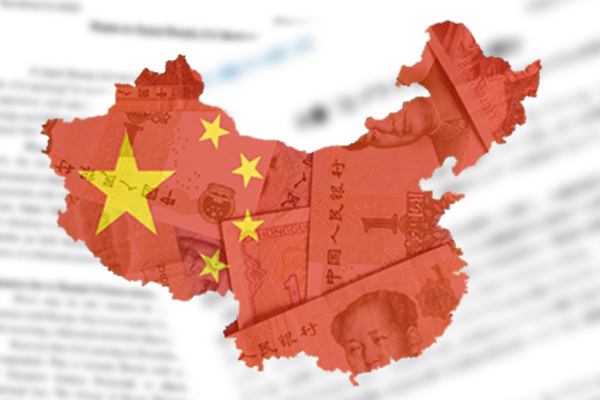On July 18, the Chinese Communist Party ended its third plenary session of the 20th Central Committee, setting forth a policy to grow economy with state-run companies as a pillar. Amid sluggish domestic demand, state-run companies will be the key to building up supply chains and production capacity, and further enhancing China’s low-price export offensive. China will take advantage of its dominant supply of critical materials to threaten Western countries that oppose the offensive.
Lies in GDP statistics
When the third plenary CCP Central Committee session that decides on basic economic policies every five years was convened on July 15, China’s National Bureau of Statistics announced that real GDP (gross domestic product) growth for the April-June quarter came to 4.7%, exceeding the nominal growth of 4%. The excess indicates growing deflationary pressures that are to shrink demand. Even so, the real GDP growth rate was in line with the national target of around 5% for this year, meaning that the announced growth is quite unnatural.
China’s GDP is based on production reports from local governments across the country where top local party officials try to align their reports with the national growth target. Production in the GDP statistics matches the sum of demand-side data including household consumption, fixed asset investment, and the trade balance. Therefore, the National Bureau of Statistics deliberately sets the growth rate of fixed asset investment among the demand items higher to juggle data.
The evidence for this is the year-on-year fixed asset investment increase of 3.9% for the first half of this year as announced by the bureau, against a 0.9% rise based on monthly fixed asset investment data for the half-year period. Fixed asset investment is the largest GDP component, accounting for around 50% of China’s GDP. Such deviation between fixed asset investment growth data has widened since March last year, indicating that National Bureau of Statistics officials have fabricated economic growth rate to align it with the national target.
Low-price export offensive towards the West
The only decent statistics among the demand items is the trade balance which is in accordance with international standards. As exports increase, GDP expands. Overcapacity that swells due to lack of domestic demand causes a flood of exports. The low-price export offensive covers not only electric vehicles, automotive batteries, solar cells and other new energy fields that CCP General Secretary and President Xi Jinping emphasizes as “new quality production capacity,” but also traditional industries such as steel, fertilizer, and shipbuilding.
Western countries counter the low-price export offensive with high tariffs on EVs and other products. While the United States has asked Japan and Europe to join an embargo on advanced semiconductor exports to China, the Xi government has fought back. China accounts for more than 80 or 90% of global production of new energy-related materials such as EV batteries. Last year, the Xi government launched export restrictions of rare metals, rare earths, and graphite. As they are key to supply chains, the restrictions directly affect major Western industries.
The communique of the third plenary session of the 20th CCP Central Committee called for strengthening supply chains. The Xi government, weaponizing huge production capacity, is likely to further threaten, intimidate, and sanction other countries.
Hideo Tamura is a Planning Committee member at the Japan Institute for National Fundamentals and a columnist for the Sankei Shimbun newspaper.


